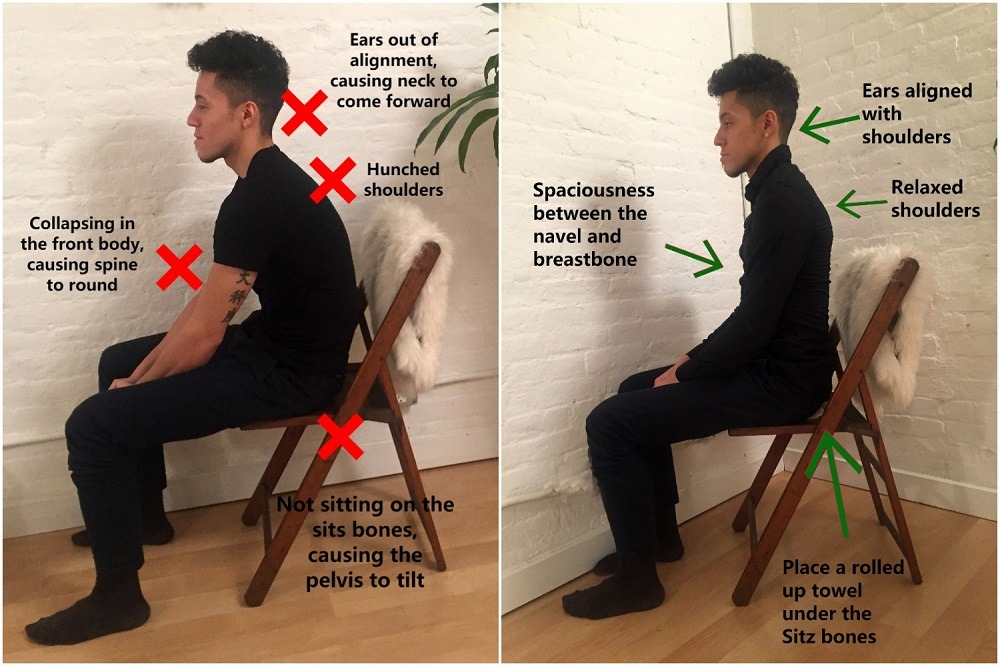
Most of us spend a significant part of our lives sitting, whether at home, office, or in school. Prolonged sitting or sedentary behavior is defined as engaging in activities that involve low energy expenditure while sitting or reclining. This can include tasks such as desk- or computer-related work, lengthy online meetings, phone conversations, watching TV, or driving a car. Studies show that in many places people spend on average between 7 to 9 hours a day remaining seated, mainly at work or at home.
All that sitting has a profound impact on our overall health, with research linking prolonged daily sitting to increased risk of negative health outcomes, including overweight, obesity, high blood pressure, type 2 diabetes, heart disease and stroke. Excessive sitting has also been shown to slow down metabolism, affecting ability to regulate blood sugar, blood pressure, and metabolize fat, as well as to weaken muscles and bones that lead to less support for the body and poor posture.
Signs that you are sitting for prolonged periods include tension or pain in your lower back, neck, or chest; leg heaviness and/or swelling; weak gluteal muscles (muscles in the buttocks region); decreased mobility in the hip and shoulder joints, and sometimes facial swelling. Without remedial measures these conditions can exacerbate
In a recent meta-analysis of 13 previous studies of sitting time and activity levels, researchers found that those who sat for more than eight hours a day with no physical activity had a risk of dying similar to that posed by obesity and smoking. However, unlike some other studies, this data analysis of more than 1 million people found that 60 to 75 minutes of moderately intense physical activity a day countered the effects of too much sitting.
Researchers at the Active Life Lab at South-Eastern Finland University have now suggested a simple remedy to too much sitting — stand up. They explained how this simple change, along with other methods, can make a big difference in your well-being. A previous project by the researchers on everyday activity and sitting habits revealed that people’s muscles remain inactive for approximately 70 percent of the day, and this increases to a staggering 90 percent during office hours.
Studies show that all sitting positions impact the lumbar spine, pelvis, hip joints, and gluteal muscles. While sitting up straight is often recommended as a proper sitting practice, it is even more important to engage in regular movements of the spine so as to keep it healthy. Spine movement increases nutrient supply to the intervertebral disc, changes pressure on the lumbar discs, and reduces back pain.
Wrong sitting posture could be the result of years of habit. Some of these positions include sitting with:
One knee crossed over the other: This posture increases tilting of the pelvis and the angle between the pelvis and the spine. However, this position weakens and adds more compression on the glutes and muscles in the buttocks as well as increases rotation of the pelvis and the lumbar spine, which might influence the health of the hip joint and lower back. This position also causes one side of the back to have more tension in the trunk muscles, and this imbalance negatively affects our spine.
Crossed ankles: While this position is better than the one knee crossed over the other position, it still increases muscle tightness which may lead to musculoskeletal issues. Some of these issues, if not addressed, may develop into problems that could even cause back pain.
Hunched sitting: This posture weakens neck muscles and creates tension in the back muscles because they do not work in this position. Moreover, the cervical vertebrae (bones in the neck) are displaced from their natural position, causing the back muscles to stretch unnaturally. As a consequence, more pressure is exerted on the front edges of the discs located between the vertebrae, potentially leading to discomfort and increased risk of spinal issues.
Slouched sitting: This position increases tension in your lower back and neck. As in a hunched position, the cervical spine is away from the neutral alignment, which increases the load on intervertebral discs and tension in your neck muscles. Moreover, this position increases tension on the connective tissue in the lower back because of the excessive loading on the lumbar spine.
The Finnish researchers suggested that in addition to traditional recommendations such as spending 150 minutes in moderate-to-vigorous physical activity per week, significant improvements in health could potentially be achieved through small lifestyle changes that people can easily incorporate in their lives. These include:
Walking: Taking regular and frequent short breaks to walk around. Walking is a natural and continuous movement promoting blood and lymph circulation, joint mobility, and overall well-being. Walking also involves movement of the spine improving spinal flexibility and preventing stiffness.
Exercises: Regular exercises help restore equilibrium to the muscles that may become affected due to prolonged sitting.
Sitting with lumbar spine support: Sitting with lumbar support creates less pressure on intervertebral discs and alleviates discomfort.
Frequent breaks: Frequency of breaks is also important, as this ensures you consistently give your body and mind the opportunity to rest and recuperate.
The longer you are sitting, the more recovery time is needed. It is better to sit for shorter periods with more frequent breaks, than to take a break after sitting for two or more hours. After extended periods of sitting, back pain may arise due to muscle fatigue and increased tension, making it difficult for the musculoskeletal system to recover during short breaks.













